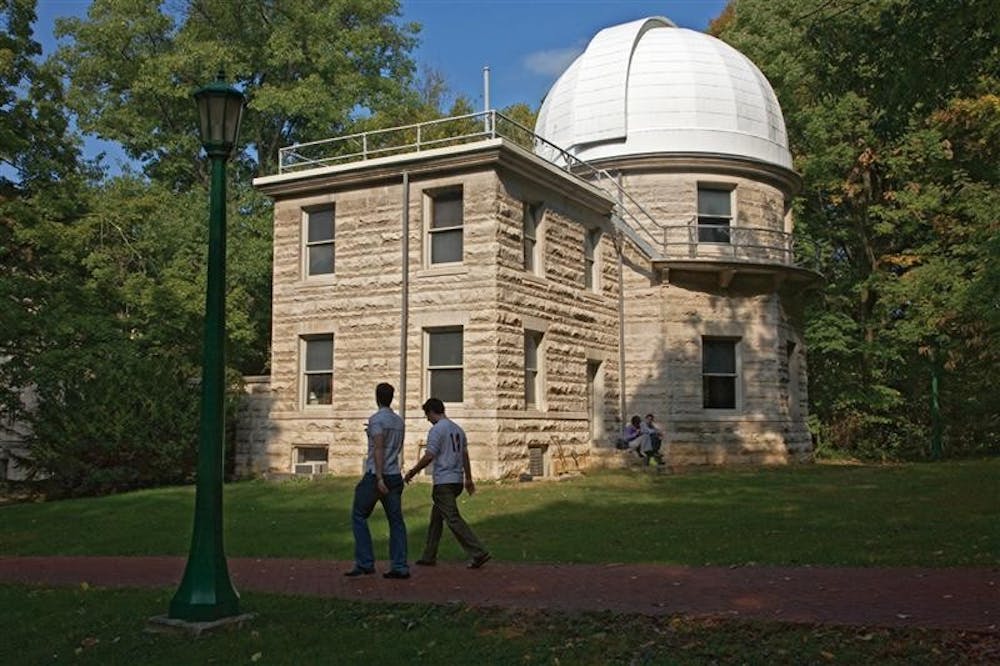It is clear to the eye that IU mixes modern technology with many traditional, aged buildings.
Enter the journalism school and you will see rooms full of Apple computers. Walk east through the Sample Gates and you will be surrounded with buildings that date back to the 1820s, brick pathways and bronze statues of some of the most influential figures of our collegiate environment.
One of the campus buildings that best displays the contrast between the times is the Kirkwood Observatory, located at the corner of Kirkwood Avenue and Fourth Street.
More than 100 years old, the classic observatory, one of about two dozen in the U.S., was built during the “golden age of astronomy,” when researchers transitioned from solely observing the stars to measuring them, said Caty Pilachowski, who is the Daniel Kirkwood chair in astronomy.
Originally designed for observing binary stars, the observatory later became available for “teaching, educating and training,” said Tala Monroe, a graduate student and employee at the observatory. The telescope and dome cost about $7,500, which is now equivalent to about $170,000, according to the department Web site.
Visitors to the observatory during the last couple of months have been able to see Jupiter and its Galilean moons, along with star clusters, Monroe said. Star clusters are groups of stars that formed together and are gravitationally bound to one another. There are two types: globular, which can be more than 1,000,000 stars viewed at once, and open, which range from a couple dozen to 1,000 stars, Monroe said.
Observers often question whether meteor showers will be visible from the observatory, but Monroe said large, open, dark fields are better for seeing them. Because of the observatory’s location near campus and downtown, lights play a factor in visibility.
“The light totem at the Art Museum is a real problem for us because it makes the sky even brighter and makes it harder for people to see things with a telescope,” Pilachowski said, laughing.
Kirkwood Observatory is free and open to the public Wednesday nights from March through November. Each showing consists of looking at three different objects in the sky, Monroe said. Graduate students alternate shifts and, because their preferences vary, viewers potentially have the chance to observe different objects each week, she added. The objects change considerably over the months, she continued.
Going to the observatory is a “refreshing change from normal nightlife,” said Topher Lang, a senior telecommunications major.
The workers are informative and offer the public a chance to learn about astronomy, he added.
Kirkwood Observatory blends tradition, technology
Facility is only 1 of about 2 dozen in country

Get stories like this in your inbox
Subscribe





